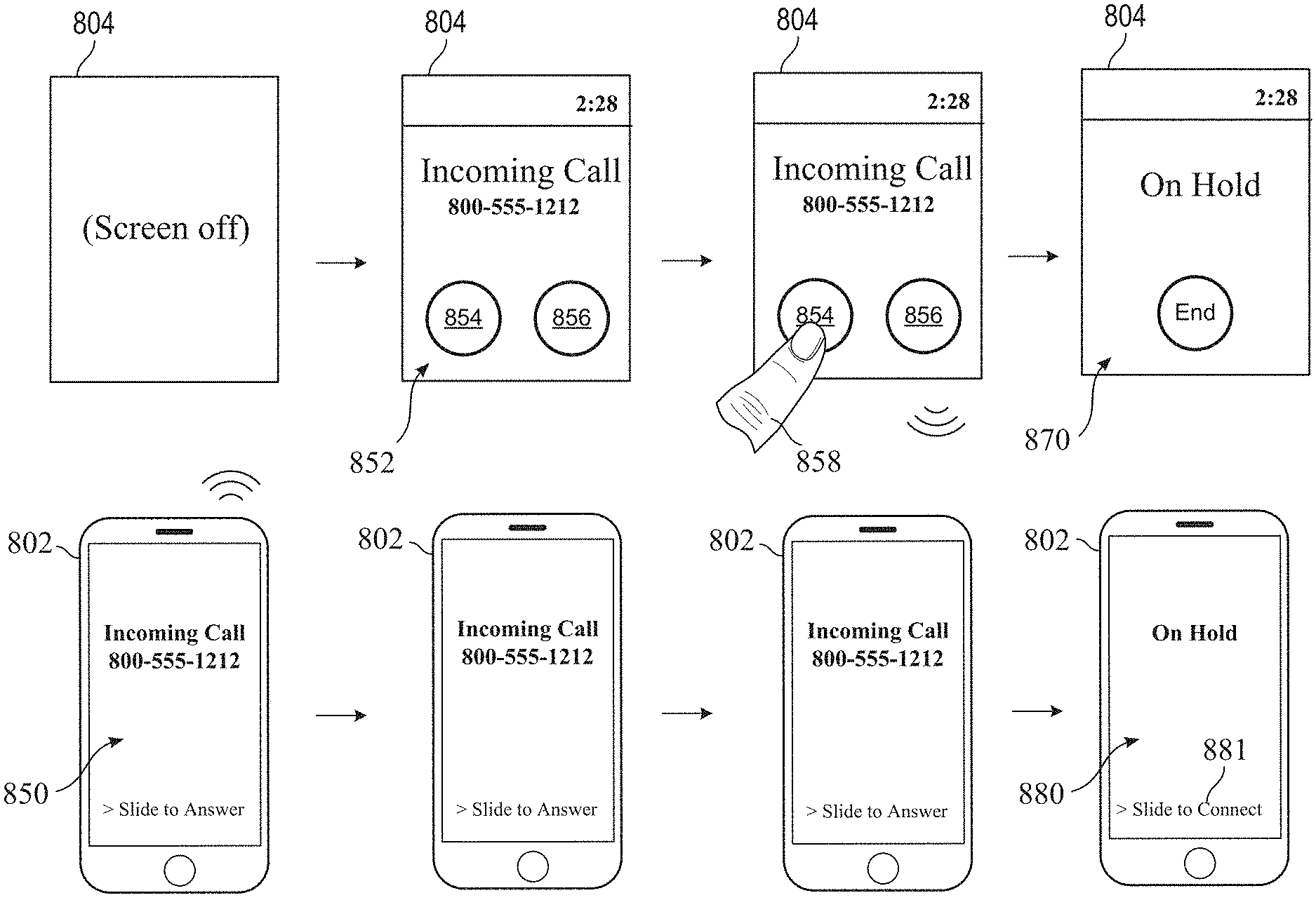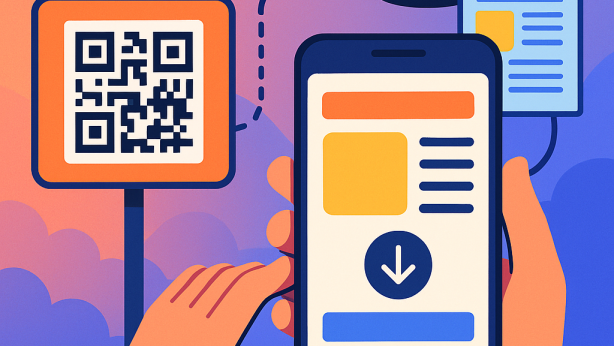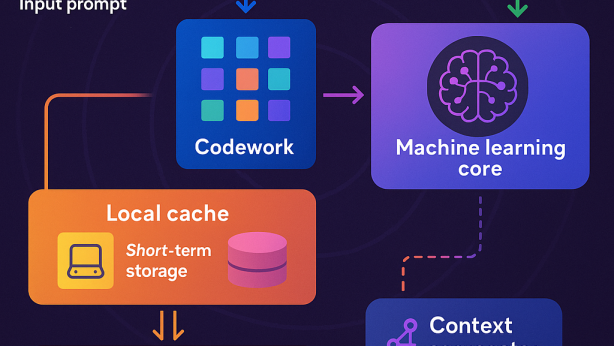Invention for Phone user interface

Invented by Lawrence Y. YANG, Imran Chaudhri, Anton M. DAVYDOV, Alan C. Dye, Dylan Ross Edwards, Christopher Patrick FOSS, Jonathan P. Ive, Zachery KENNEDY, Stephen O. Lemay, Apple Inc
The market for phone user interface is highly competitive, with several companies offering their services. Some of the leading players in this market include Apple, Samsung, Google, and Microsoft. These companies have invested heavily in research and development to create interfaces that are intuitive and easy to use.
One of the significant trends in the phone user interface market is the use of artificial intelligence (AI) and machine learning (ML). These technologies are used to create interfaces that can learn from user behavior and adapt to their preferences. For example, AI can be used to suggest apps based on the user’s usage patterns, while ML can be used to personalize the interface based on the user’s preferences.
Another trend in the phone user interface market is the use of voice assistants. Voice assistants such as Siri, Google Assistant, and Alexa have become increasingly popular, and many users prefer to interact with their phones using voice commands. This has led to the development of interfaces that are optimized for voice commands, making it easier for users to interact with their phones.
The market for phone user interface is also influenced by the increasing demand for mobile gaming. Mobile gaming has become a significant industry, and many users spend a considerable amount of time playing games on their phones. This has led to the development of interfaces that are optimized for gaming, with features such as gesture controls and haptic feedback.
In conclusion, the market for phone user interface is a rapidly growing industry, with several players offering their services. The use of AI, ML, and voice assistants has revolutionized the way users interact with their phones, making it easier and more intuitive. As the demand for mobile gaming continues to grow, we can expect to see more interfaces optimized for gaming in the future. Overall, the phone user interface market is an exciting industry to watch, with new innovations and trends emerging all the time.

The Apple Inc invention works as follows
An electronic device that provides access to phone features via a user interface. The user interface determines whether the electronic device can be connected to a companion cell phone. The user interface shows whether a headset can be used to make a call. The user interface allows you to switch between a cellular phone, headset and/or an electronic device for making incoming or outgoing calls.

Background for Phone user interface
The present disclosure is generally applicable to computer user interfaces and, more specifically, to user interfaces that allow for the carrying out of phone calls.
Some methods for controlling phones using electronic devices are cumbersome and inefficient. Some existing methods, for example, use a complicated and time-consuming user interface that may require multiple key presses or keystrokes across multiple devices. Even though multiple devices can communicate with each other, some existing techniques require interaction with specific devices (e.g. headset and phone). Some techniques take longer than they are necessary, which can lead to wasted time and energy. This is especially important for battery-operated devices.
The present technology provides electronic devices with more efficient and faster methods and interfaces to manage phone operations. These interfaces and methods can be used to complement or replace existing methods of managing phone operations. These interfaces and methods reduce cognitive burden and create a more efficient human/machine interface. These interfaces and methods are useful for battery-operated computing devices. They conserve power and prolong the battery life.
In some embodiments, a method for providing phone functionality includes: at an electronic device having a touch sensitive display; detecting touch intensity on the touch sensor; sending instructions to a cell phone informing it to display a second affordance if the characteristic intensities exceed the predetermined threshold; and, in response at least to a determination of the characteristic intensities below the threshold intensity, performing the function associated with the first affordance
Executable instructions to perform these functions can be included, optionally in a nontransitory computer readable storage medium or another computer program product that is designed for execution by one or several processors.” These instructions can be executed by a transitory computer readable storage medium, or any other computer program product that is designed for execution by one to more processors.
In some embodiments, non-transitory computer-readable storage media stores one or several programs. The instructions, when executed by one of the processors of an electronic gadget with a display, cause the device: to detect a touch on the screen during an active call, determine if the characteristic intensity exceeds a predetermined threshold; to send an instruction to the cellular telephone instructing it to display a second affordance. In this case, the cellular phones retrieves the active call and, in response at least, to perform the function
In some embodiments, an electronics device comprises: a display; one or multiple processors; memory; and one/more programs. The one or two programs include instructions for: detecting touch on the display during an active call, determining if the characteristic intensity exceeds a predetermined threshold; instructing a cell phone to display a second affordance. This allows the cellular to retrieve the active call when the second affordance is selected; and performing a function associated the first affordance in response at least to a determination of the predetermined intensity
This provides devices with more efficient and faster methods and interfaces to manage phone operations. This increases the effectiveness, efficiency and user satisfaction. These interfaces and methods may be used in conjunction with or as an alternative to other methods of managing phone operations.
DESCRIPTION OFF THE FIGURES
A description of embodiments is necessary to better understand the different described embodiments. This should be accompanied by the following drawings, where like reference numbers refer to the corresponding parts throughout these figures.

FIG. “FIG.
FIG. “FIG.
FIG. “FIG. 2 illustrates a portable multifunction gadget having a touch screen according to some embodiments.
FIG. “FIG.
FIG. 4A shows an exemplary user interface to a menu of apps on a portable multifunction handheld device according to some embodiments.
FIG. “FIG.4B” illustrates an example user interface for a multifunction display device that has a separate touch-sensitive surface. This is in accordance to some embodiments.
FIG. “FIG.
FIG. “FIG. 5B shows a portable multifunction device with a touch-sensitive LCD and a rotatable input system in accordance to some embodiments.
FIGS. “FIGS.5” 5C-5D show exemplary components for a personal electronic device with a touch-sensitive LCD and intensity sensors, in accordance to some embodiments.
FIGS. “FIGS.5” 5E-5H show exemplary components of an electronic personal device and user interfaces in accordance to some embodiments.

FIGS. “FIGS.6A-6H are examples of user interfaces that allow you to access phone features.

Click here to view the patent on Google Patents.


